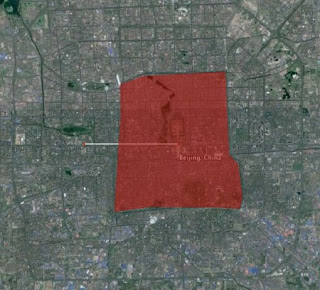Day 5, second day at Natooke, I woke up feeling so ill that I had to phone in sick – not a great start. It started with a simple cold and has escalated into what I can only describe as pollution poisoning, otherwise known as the Beijing cold, so here is a few facts about pollution.
Clear air is a balance of 78% Nitrogen, 21% Oxygen, water vapour and small amounts of other inert gases such as Carbon Dioxide or Helium.
Pollution is made of two distinct categories;
Gases and Vapours
- Nitrogen Oxides
- Sulphur Dioxide
- Carbon Monoxide
- Low level Ozone
- Hydrocarbon Chemicals
Particulates
- Asbestos dust from brake linings
- Pollen
- Road dust
- Black smoke from diesel emissions
There are two categories of particulates; Inhalable and respirable.
Inhalable particulates are the particles big enough to be trapped within the nasal hairs and the mucous membranes at the back of the throat.
Respirable particulates are the particles that pass beyond the nasal hairs and the mucous membranes of the throat, and pass into the lung sacks and subsequent blood barrier. These particulates can carry carcinogenic chemicals used in petrol to the blood barrier.
What can you do about? get a mask.
In 2010, it was reported that there are 4 million cars in Beijing, if you were to put all of those cars next to each other you would have to obliterate most of the historical buildings in Beijing into an immense car park that would engulf the entire first and second ring as illustrated in the image below.
Developing bicycle usage and public transit networks would reduce the space required by cars, and in turn the pollution will improve. Which is why I fully support Ines Bicycle Company efforts to promote urban cycling.
